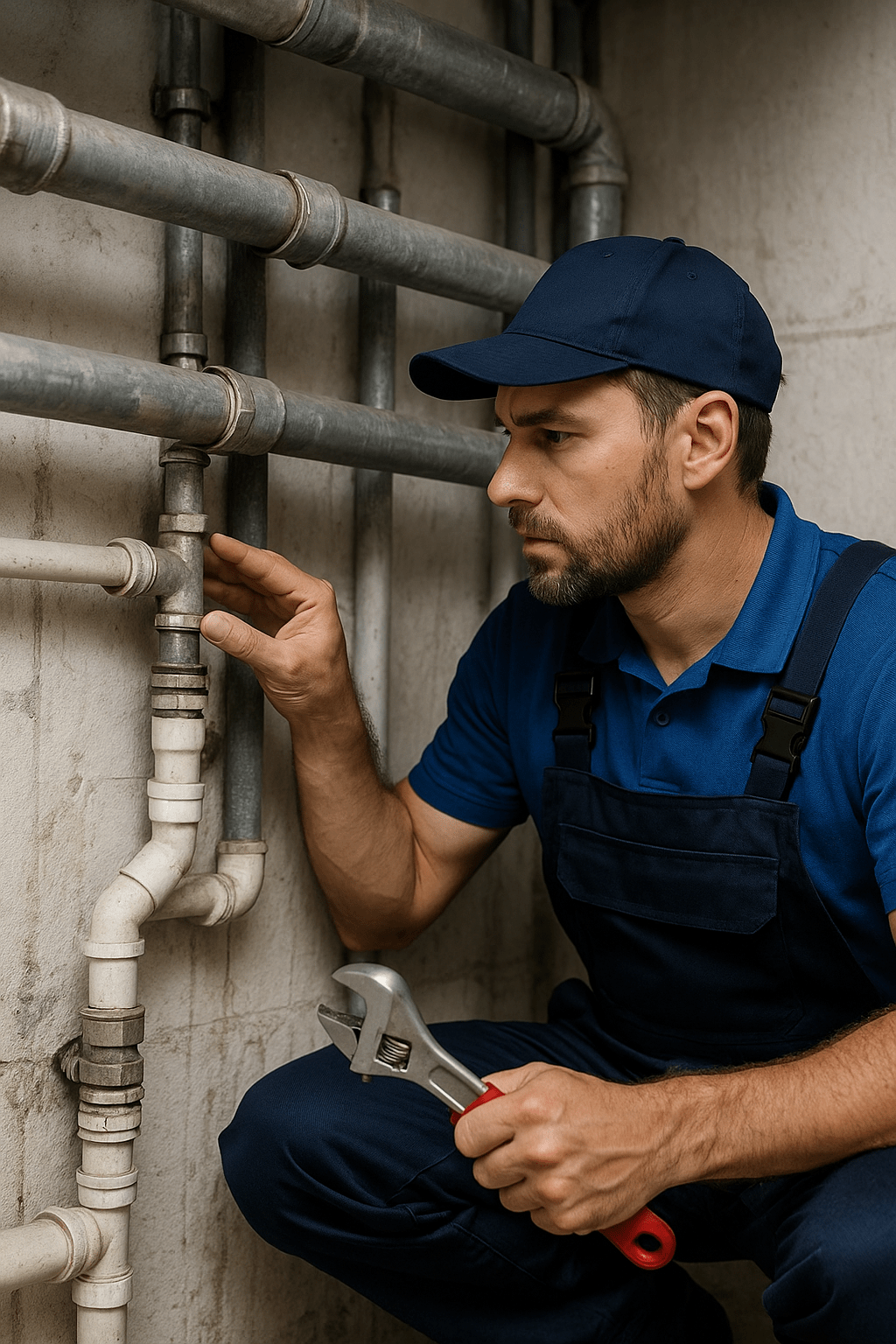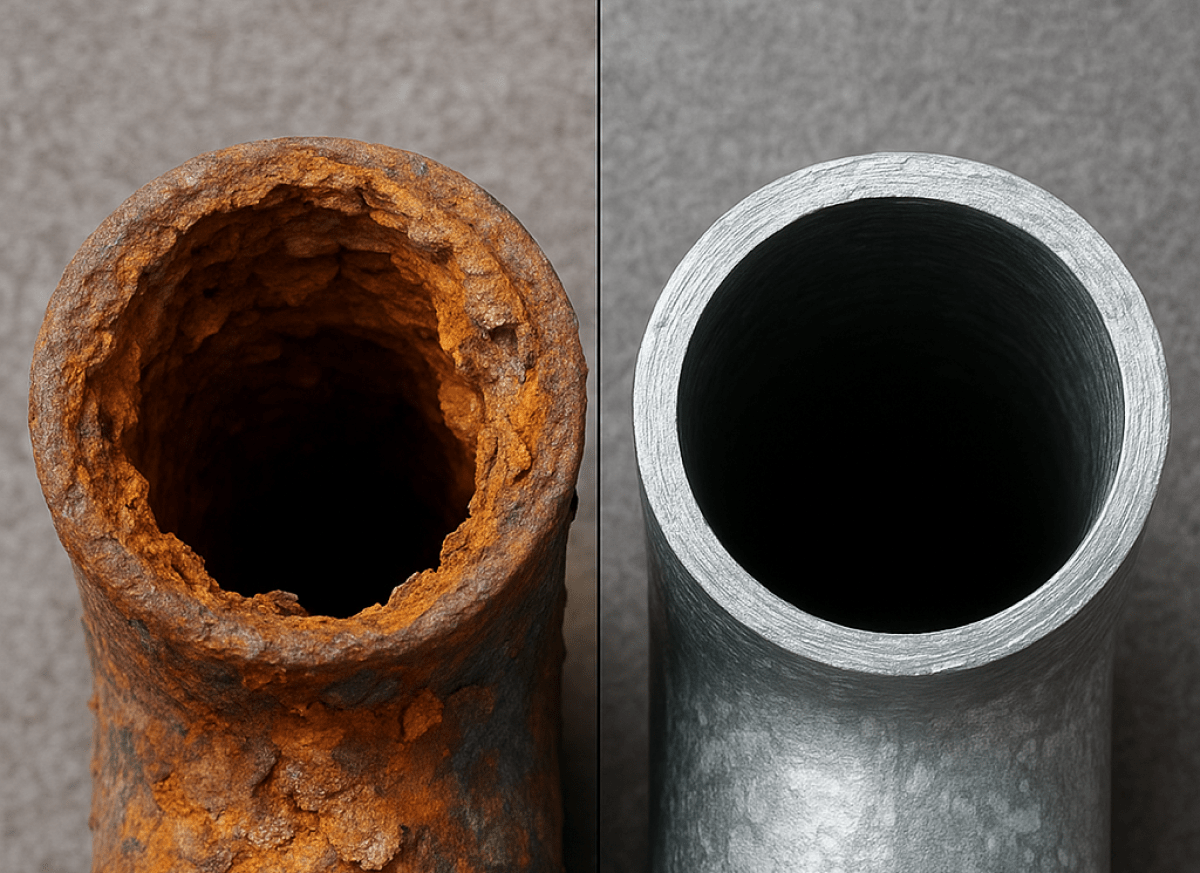
Proactive maintaining healthy pipe systems in your home isn’t just about convenience-it’s about safeguarding your property value, ensuring clean water, and preventing expensive damage.
1. Know Your Pipe Types
Common residential pipes include:
- Copper: durable but prone to corrosion under certain water conditions
- PVC: affordable and ideal for drainage/sewer lines
- PEX: flexible and freeze-resistant, great for Scandinavian climates
- CPVC: reinforced PVC for hot water systems
2. Spotting Plumbing Problems Early
Leaks
- Causes: corrosion (galvanic or pitting), loose fittings, high pressure, tree roots
- Signs: dripping faucets, stained ceilings, musty smell, rising bills
Clogs
- Causes: hair, grease, food waste, mineral buildup
- Signs: slow drains, gurgling noises, backups/toilet overflow
Low Water Pressure & Discoloration
- Causes: mineral buildup, leaks, municipal issues, pipe corrosion
- Signs: weak tap flow, unusual water color/taste
Noisy Pipes
- Causes: water hammer, loose pipes, high pressure, cavitation
- Signs: banging, rattling, whistling during use
3. Preventive Maintenance Tips
- Annual visual checks: inspect visible pipes for leaks, corrosion, damage
- Flush your water heater: yearly to prevent sediment buildup
- Clean aerators & showerheads: remove limescale with vinegar
- Install pressure regulators: to protect pipes from high pressure
- Use low-flow fixtures: saves water and reduces stress on pipes
- Avoid harsh chemicals: use natural cleaners (baking soda + vinegar)
- Manage tree roots: plant trees away from sewer lines or install root barriers
4. When to Call a Pro
Schedule a licensed plumber for:
- Pressure testing or leak detection
- Professional inspections every 2–3 years
- Hydrostatic or advanced testing on critical systems
5. Benefits of Healthy Pipe Maintenance
- ✔ Reduced repair costs
- ✔ Better water quality
- ✔ Higher home value
- ✔ Enhanced comfort
- ✔ Environmental sustainability through water conservation

Key Takeaway
By maintaining healthy pipe systems-through regular inspection, preventive care, and timely professional support—you ensure safety, comfort, long-term savings, and sustainability in Scandinavian homes.
Explore our other guides: HDPE pipes in construction and leak-free piping joints.
Learn more about industry best practices from the Norwegian Plumbing Association.


